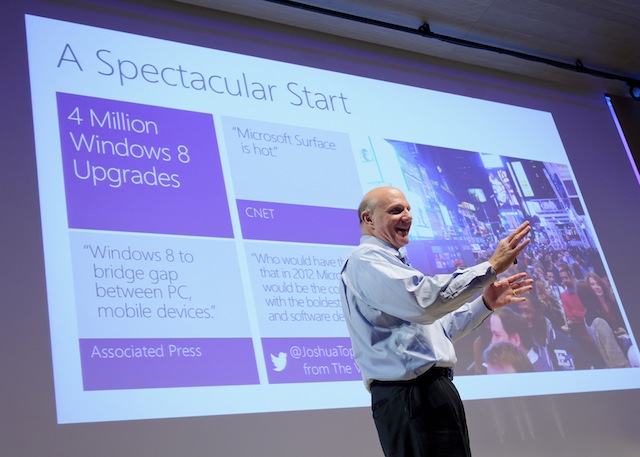Following the announcement of his pending retirement, Microsoft CEO Ballmer held his first interview for twenty years with ZD Net’s Mary-Jo Foley.
During the ZD Net interview, Ballmer and Foley ranged over subjects ranging from his possible replacement, reasons for retirement and his greatest highlight during his thirteen year tenure as CEO.
Foley’s asked Ballmer what was his greatest disappointment as Microsoft CEO and, not surprisingly, he nominated the development of Microsoft Vista.
I would say probably the thing I regret most is the, what shall I call it, the loopedy-loo that we did that was sort of Longhorn to Vista. I would say that’s probably the thing I regret most. And, you know, there are side effects of that when you tie up a big team to do something that doesn’t prove out to be as valuable.
Those side effects of Vista’s botched development were felt across the PC industry as the operating system’s overlong development and disappointing performance broke the three year upgrade cycle that underpinned the sector’s business model.
Unlike the similar debacle eight years earlier with Windows ME where Microsoft’s market position was unchallenged, Vista came along at the time the computer industry itself was being disrupted by smartphones leaving the entire PC industry exposed to a major shift.
Now Ballmer’s successor will have to deal with the industry’s broken upgrade model along with the post-PC era where desktop and server operating systems are no longer the key to controlling the market. Every option is a challenge to Microsoft’s existing businesses.
As discussed in Ballmer’s interview with Mary-Jo Foley, Microsoft still sees its future in consumer IT, whether that includes continuing the company’s three screen strategy of supplying Windows on the desktop, tablet and smartphone will be one of the early and critical decisions the next CEO will have to make.
While Microsoft Vista might have been Steve Ballmer’s biggest mistake as Microsoft CEO, the challenges ahead for the company’s board and management are great, it’s going to take strong leadership for the once dominant software giant to maintain its place in a radically changed market.
Song of the day – Ms Otis regrets by Kirsty McColl and The Pogues.





